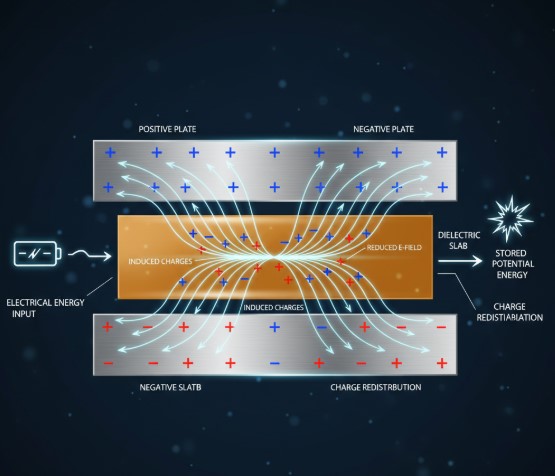This study delves into emotional responses, specifically using skin conductance to understand human feelings. Researchers are exploring new ways to interpret emotions beyond just facial expressions, aiming for a more comprehensive understanding of emotional state detection. This innovative approach promises to revolutionize how we interact with technology and each other, potentially impacting various fields like healthcare and consumer electronics. The study’s results are significant, offering a glimpse into a future with emotionally intelligent devices.
The research meticulously measured skin conductance responses to different emotional stimuli, like fear, bonding, and humor. This approach, unlike traditional methods relying on facial expressions, analyzes the dynamics of the responses, including the speed of peak conductance and return to normal. This detailed analysis allows for a more nuanced understanding of how different emotions manifest physiologically. The findings suggest distinct patterns in skin conductance correlate with various emotional experiences, highlighting the complexity of human emotions.
Table of Contents
We also Published
“The future belongs to those who believe in the beauty of their dreams.” – Eleanor Roosevelt
Understanding Emotional Responses Through Skin Conductance
Emotional sensing technologies are rapidly evolving, with researchers exploring diverse biological signals to decipher human emotions. This innovative approach to emotional recognition, utilizing skin conductance, promises a more nuanced understanding of human feelings. By analyzing skin conductance patterns, researchers are aiming to develop devices capable of interpreting emotional states, moving beyond the limitations of relying solely on facial expressions. This advancement in emotional recognition technology has significant implications for a wide range of applications, from consumer electronics to healthcare.
The study, conducted by researchers at Tokyo Metropolitan University, focused on the dynamics of skin conductance responses to various emotional stimuli. Volunteers were presented with videos evoking fear, familial bonding, and humor, while their skin conductance was meticulously measured. This approach differs from traditional methods, which often rely on facial expressions as the primary indicator of emotional states. The unique methodology involved measuring not just the peak conductance but also the response dynamics, analyzing how quickly the conductance trace reached a peak and how it returned to normal. This sophisticated approach allows for a more comprehensive understanding of emotional responses.
The results of the study indicate that distinct patterns in skin conductance responses correlate with different emotional experiences. The team observed that fear-inducing stimuli elicited longer-lasting conductance responses compared to humor or familial bonding. This finding aligns with biological mechanisms, suggesting that the extended response to fear may be an adaptive response to potential danger. Conversely, responses to emotional scenes of family bonding exhibited a slower increase, possibly due to the complex interplay of emotions like sadness and happiness. These findings underscore the complexity of human emotional responses and the need for sophisticated analysis techniques.
The statistical analysis of the collected data revealed that the dynamics of skin conductance responses can be used to differentiate between different emotional states. While perfect emotional discrimination is not yet possible, the study demonstrates the potential to make statistically significant predictions about the emotional state of an individual. This breakthrough opens doors for developing devices capable of recognizing and responding to human emotions. The implications of this technology extend beyond entertainment, potentially impacting areas like healthcare, mental health assessment, and even customer service interactions.
Probing Emotional Responses with Skin Conductance
The study highlights the potential of skin conductance as a reliable indicator of emotional states. By analyzing the dynamics of skin conductance responses, researchers can potentially discern subtle differences in emotional experiences. This method offers a non-invasive and potentially more accurate approach to understanding human emotions compared to traditional methods. The use of skin conductance measurements is becoming increasingly important in various fields, from psychology to consumer electronics, enabling the development of emotionally intelligent devices.
The research team employed a rigorous experimental design, exposing volunteers to carefully selected video stimuli. This meticulous approach ensured that the emotional responses were well-defined and measurable. The use of probes on the skin to measure skin conductance provided a precise and continuous record of the physiological responses. This data collection method offers a more comprehensive view of the emotional response compared to other methods.
The results demonstrated a strong correlation between specific emotional stimuli and the dynamics of skin conductance responses. The findings suggest that the time it takes for the conductance response to reach a peak and return to baseline could provide valuable information about the type of emotion experienced. This opens up new possibilities for developing emotionally intelligent devices that can adapt to and respond to human emotional states.
The study’s findings have significant implications for future research and development in emotional sensing technology. The ability to distinguish between different emotional states based on skin conductance dynamics paves the way for more sophisticated and nuanced emotional recognition systems. The methodology used in this study can be further refined and expanded to incorporate other physiological signals, leading to even more accurate and comprehensive emotional sensing capabilities.
Future Trends in Emotional Sensing Technologies
The research presented a significant step forward in the development of emotional sensing technologies. The ability to analyze skin conductance responses to infer emotional states opens up a wide range of applications. The potential for developing emotionally intelligent devices is a fascinating prospect. These devices could potentially improve human-computer interaction and offer more personalized experiences.
Future research could explore the integration of skin conductance measurements with other physiological signals, such as brainwave activity or heart rate variability. This combined approach could provide a more comprehensive understanding of human emotions and their underlying physiological mechanisms. Further studies could also investigate the impact of individual differences, such as age, gender, or cultural background, on skin conductance responses. This could help create more accurate and personalized emotional sensing technologies.
The development of emotionally intelligent devices has the potential to revolutionize various fields. In healthcare, these devices could assist in monitoring patients’ emotional well-being and providing personalized support. In consumer electronics, they could lead to more intuitive and responsive user interfaces. The possibilities are vast and promising.
The ongoing research into emotional sensing technologies holds immense potential for improving human-computer interaction and creating more personalized experiences. The use of skin conductance and other physiological signals in conjunction with advanced algorithms could lead to the development of devices that can understand and respond to human emotions in real-time. This technology has the potential to reshape the way we interact with technology and with each other.
Conclusion: The Future of Emotional Interaction
The future of emotional interaction is rapidly evolving, driven by advances in emotional sensing technologies. The study demonstrates the potential of skin conductance as a reliable indicator of emotional states, paving the way for more sophisticated and personalized emotional recognition systems. The ability to understand and respond to human emotions in real-time will undoubtedly transform various aspects of human life.
The implications of this research extend beyond the realm of consumer electronics. Emotional sensing technologies could play a crucial role in healthcare, mental health assessment, and even customer service interactions. By understanding and responding to human emotions, we can create more supportive and empathetic environments.
The research opens doors for future developments in emotional sensing technologies, leading to the creation of devices that can adapt to and respond to human emotional states. This technology has the potential to reshape the way we interact with technology and with each other. The potential for more personalized and intuitive interactions is truly exciting.
The future holds immense potential for emotionally intelligent devices. These devices will not only enhance our interactions with technology but also provide valuable insights into human emotions and their underlying physiological mechanisms. The journey towards a deeper understanding of human emotions continues, promising a future where technology truly understands and responds to our emotional needs.
| Topic | Summary/Details |
|---|---|
| Emotional Sensing Technologies | Researchers are exploring diverse biological signals, including skin conductance, to understand and recognize human emotions. This method aims to move beyond relying solely on facial expressions. |
| Skin Conductance Study | A study at Tokyo Metropolitan University analyzed skin conductance responses to emotional stimuli (fear, bonding, humor). Volunteers were shown videos, and researchers measured skin conductance dynamics (peak time, return to baseline). |
| Results | Distinct patterns in skin conductance responses correlate with different emotions. Fear elicited longer-lasting responses, while bonding responses had a slower increase. Statistical analysis suggests differentiating emotional states. |
| Methodology | Rigorous experimental design using video stimuli and precise skin conductance measurement (probes) to record physiological responses. This allows for a more comprehensive view of emotional responses compared to other methods. |
| Future Trends | Future research could integrate skin conductance with other physiological signals (brainwaves, heart rate). Also, investigating individual differences (age, gender, culture) on skin conductance responses is important for creating more accurate and personalized emotional sensing technologies. |
| Applications | Emotional sensing technologies have potential applications in healthcare (monitoring patient well-being), consumer electronics (intuitive user interfaces), and customer service. |
| Conclusion | Advances in emotional sensing technologies, particularly using skin conductance, offer a promising future for understanding and responding to human emotions in real-time. This technology has the potential to reshape human-computer interaction and provide valuable insights into human emotional mechanisms. |
| Emotional Sensing Technology Keyphrase | This research highlights the potential of skin conductance as a reliable indicator of emotional states, opening up new possibilities for developing emotionally intelligent devices that can adapt to and respond to human emotional states. |
Emotional Sensing: A Revolution in Human-Computer Interaction Using Skin Conductance
- Skin Conductance as a New Emotional Indicator: This study explores a novel approach to understanding human emotions, moving beyond traditional methods like facial expressions. It focuses on skin conductance responses, a physiological measure, to analyze different emotional states.
- Detailed Analysis of Emotional Responses: Instead of just looking at the peak of the skin conductance response, researchers analyze the *dynamics* of the response—how quickly it peaks and returns to normal. This detailed approach allows for a more nuanced understanding of the complexity of human emotions.
- Distinct Patterns for Different Emotions: The research reveals distinct patterns in skin conductance that correlate with various emotional experiences. For example, fear-inducing stimuli produced longer-lasting responses than those associated with humor or bonding. This highlights the nuanced physiological differences between emotions.
- Statistical Significance and Future Applications: The study’s statistical analysis demonstrates the potential for using skin conductance to predict emotional states. This breakthrough has significant implications for developing emotionally intelligent devices, impacting areas like healthcare, customer service, and even entertainment.
- Beyond Facial Expressions: This research emphasizes a shift from relying solely on facial expressions to understanding emotions through physiological responses. Skin conductance offers a non-invasive and potentially more accurate way to gauge emotional states.
- A Rigorous Approach: The study employs a well-designed experimental setup using controlled video stimuli to elicit specific emotional responses. This meticulous approach ensures reliable data collection and analysis.
- The Future of Emotional Interaction: The findings suggest a promising future where technology can better understand and respond to human emotions. This will lead to more personalized and intuitive human-computer interactions.
We also Published
RESOURCES
- A Review of Different Approaches for Detecting Emotion …
- How Does Facial Emotion Recognition Express Your …
- (PDF) Emotion detection from handwriting and drawing …
- Emotion Detection: Deriving Sentiments from Customer …
- Emotion Detection – an overview | ScienceDirect Topics
- Emotion Detection using Machine Learning | by Varun Tyagi
- Detecting emotions with wireless signals
- Sensors for Emotion Recognition
- Emotion Detection and Recognition – Webthesis
- Emotion Detection by Text Analysis using Machine Learning
- Emotion Detection using Electroencephalography signals …








0 Comments